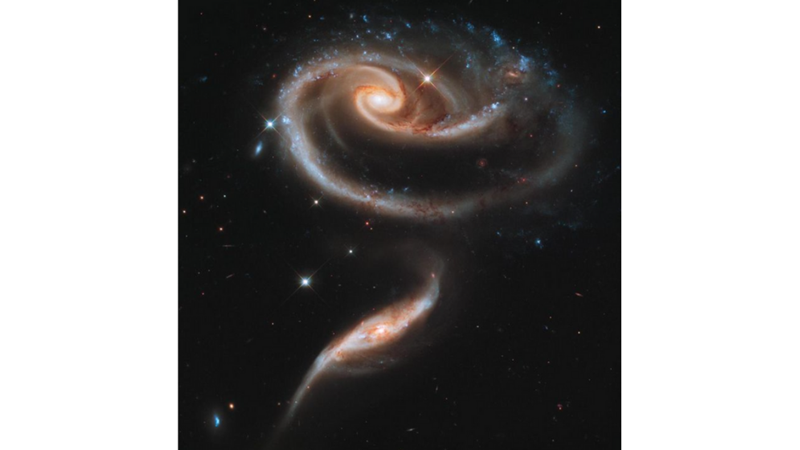In the autumn sky, a fascinating interaction can be observed in a region encompassing the constellations Perseus, Andromeda and Triangulum. Here, a large spiral galaxy (UGC 1810) takes on a rose-like shape as it is pulled by a smaller companion galaxy.
The unusual spiral patterns in this large galaxy are indicative of the interaction. The large, outer arm appears partly in the shape of a ring, a feature that occurs as galaxies pass through each other. This indicates that the smaller companion galaxy is passing through UGC 1810 and heading just outside the centre.
UGC 1810 is not the only galaxy to change in this interaction. The smaller, S-shaped galaxy also shows clear signs of intense star formation at its core, possibly triggered by the encounter with the larger galaxy.
This image, released in 2011 to celebrate the 21st launch anniversary of NASA's Hubble Space Telescope, is a composite of Hubble Wide Field Camera 3 data taken on 17 December 2010. The image was created with three different filters covering a wide range of wavelengths in the ultraviolet, blue and red parts of the spectrum.
Image description:
The alignment of these two galaxies shows them in the shape of a rose. The larger spiral galaxy forms the petals of the flower, while the smaller galaxy resembles the stem. In the upper part of the image, extremely bright and hot young blue stars glow blue. In the background are other galaxies and stars.


 Nielawore
Nielawore









Yorum yazmak için lütfen giriş yapınız